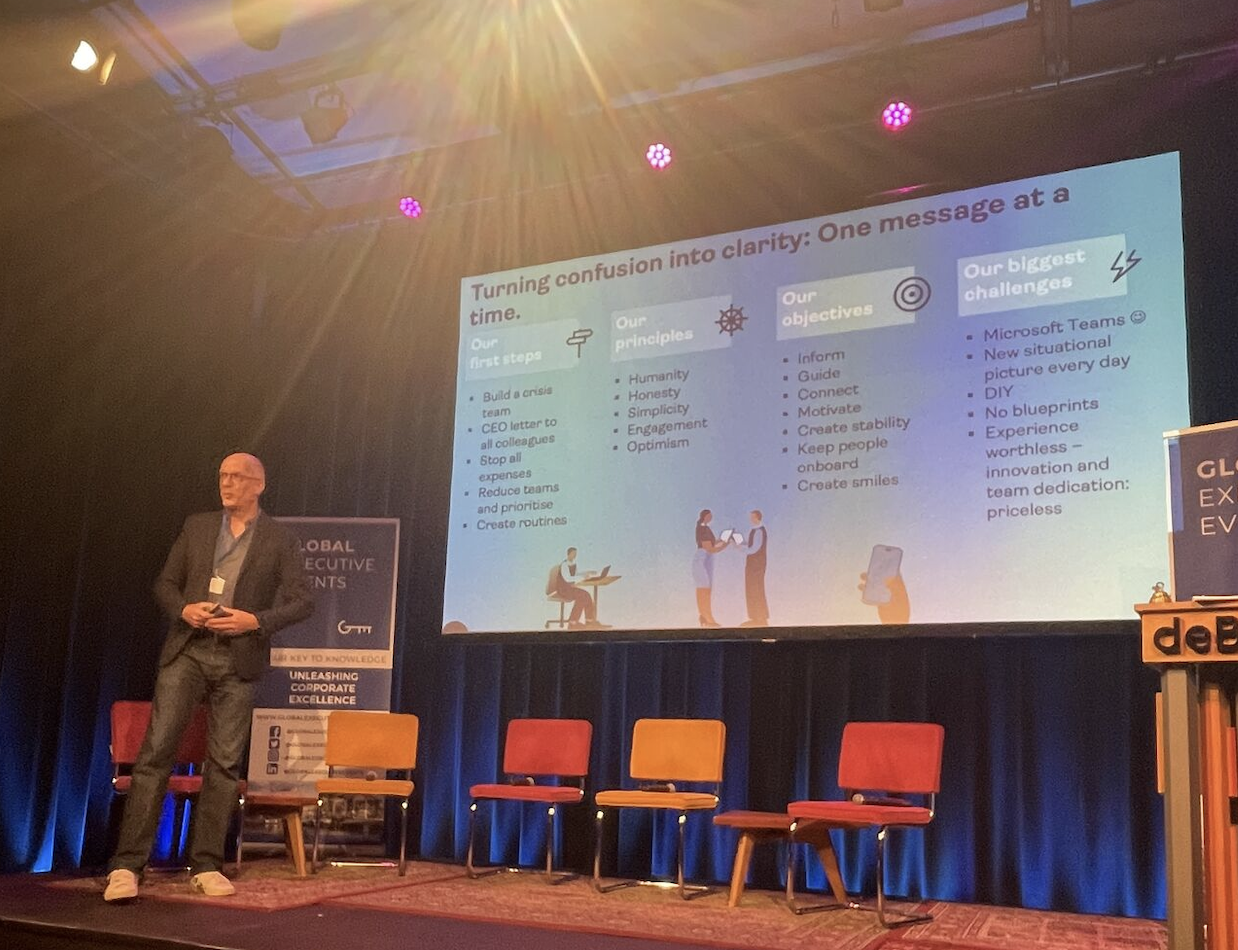Why Internal Communications is critical in a crisis
When things go sideways, your employees can be your best advocates. Or your worst enemies. Here’s how to get them firmly on your side.
In June, I had the honour of delivering the keynote at Unleashing Innovation in Digital Communications in Amsterdam – a well-curated event with inspiring speakers, sharp content, and great conversations. Kudos to the organiser Victoria Twint.
I got a lot of positive feedback, so here’s a summary of my talk. My key message:
Internal Communications is not a nice-to-have – in a crisis, even more, it is business-critical.
Why? Because when a crisis hits, everything a company says and does is under intense scrutiny. Welcome to life under the magnifying glass! That scrutiny doesn’t stop at press releases and public statements – it includes what your people say and do: At the customer frontline, at family dinners, and yes, on social media! Are they defending the company? Are they going silent? No one knows your organisation better than your own people (and yes – journalists know this, too). Which is why you need your team firmly on your side when pressure mounts.
When the pressure rises, employee communication becomes leadership.
Here are seven things strong leaders do in a crisis (and by the way, also in “business as usual”):
- Define the reality. Speak early. Keep talking. Your first task is to explain what’s happening and what it means to the company, to the team. Be transparent. Don’t sugarcoat. And start early, get ahead of the story before rumours fill the gap. And then, keep the dialogue going – even when there’s nothing new to report. Silence breeds uncertainty.
- Align your messaging across the leadership team. Your top team must speak with one voice – or at least from one playbook. Mixed messages erode trust. And in a crisis, trust is your most valuable asset. Alignment shows competence and control.
- Be empathetic, be honest. In crisis mode, empathy may feel like a luxury. But it’s not. If you want people to follow, they need to feel understood. Stepping into their shoes is the only way to reach their hearts – and their minds.
- Be visible. Be around. Be yourself. Leaders need to be seen – literally. If you’re global, go live. If you’re local, walk the halls. Visibility shows presence. Presence builds trust. And it shows that you care.
- Listen. Listen a lot. Gather feedback, ask questions, and create safe spaces for open conversation. Some of the best ideas for navigating crises come from unexpected corners of the company. And you clearly need good ideas if in a crisis…
- Allow your employees to become part of the crisis response! Informed employees are empowered employees. The more they understand the facts and the options, the more they can help move the organisation forward. Don’t put the world on your shoulders. You have a wonderful team.
- Anchor your response in the company’s values and purpose If your actions reflect your company’s purpose, you turn panic into purpose. How? Here’s an example: When TUI repatriated tens of thousands of holidaymakers in the early days of the COVID-19 pandemic, despite the circumstances being extremely difficult. But the decision was guided by a simple principle: caring for customers, especially in hard times, which was rooted deeply in the company’s values.
Oh, and there’s one more thing.
So far, so good. But there’s one more thing:
The one most important role of a leader is to look through the crisis and to share his/her perspective with the team.
It’s the privilege of the CEO to have the full perspective (or at least the best view), and while your people are busy steadying the ship, there are a few things only you can give them: confidence, optimism and a clear and calm assessment of the road ahead.
Remember: In a crisis, it’s never about what happened, but how you deal with it. And adding your people to the equation makes all the difference.
What’s your experience with internal communication in tough times?
Have you faced a crisis – as a CEO, as a leader, or as an employee? How did it play out? I’m curious to hear your perspective, your insights and learn from your experience.



Leave a Reply